Abstract
Surveys are often deemed necessary in developing countries when routine sources of data are not considered adequate to answer important policy-related questions. Although field work often goes smoothly, many surveys become bogged down in the analysis stage. With the availability of microcomputers and contemporary software, investigators in developing countries can use rapid survey methodology (RSM) to process, analyze, and report survey findings more quickly than ever before. Presented in this paper are three simple analytic procedures for planning and doing two-stage, rapid cluster surveys. All were successfully used in three rapid surveys in rural regions of Burma and Thailand. By use of a spreadsheet and graphics software package, the three procedures (a) derive the first-stage selection of 30 cluster sites with probability proportionate to size, (b) calculate variance estimates and confidence limits for the parameters of interest and graphically present the findings as 90, 95, and 99 percent confidence intervals, and (c) estimate the necessary sample size for planning two-stage, rapid cluster surveys. The procedures can be used both in the field and in teaching workshops or courses on survey methods. Examples are given from three rapid surveys conducted in Hlegu Township, Burma, and Sisaket Province, Thailand. In both countries, local health professionals were first taught the methods in a 1-week workshop before they used the procedure for conducting the rapid computer-assisted surveys.
Full text
PDF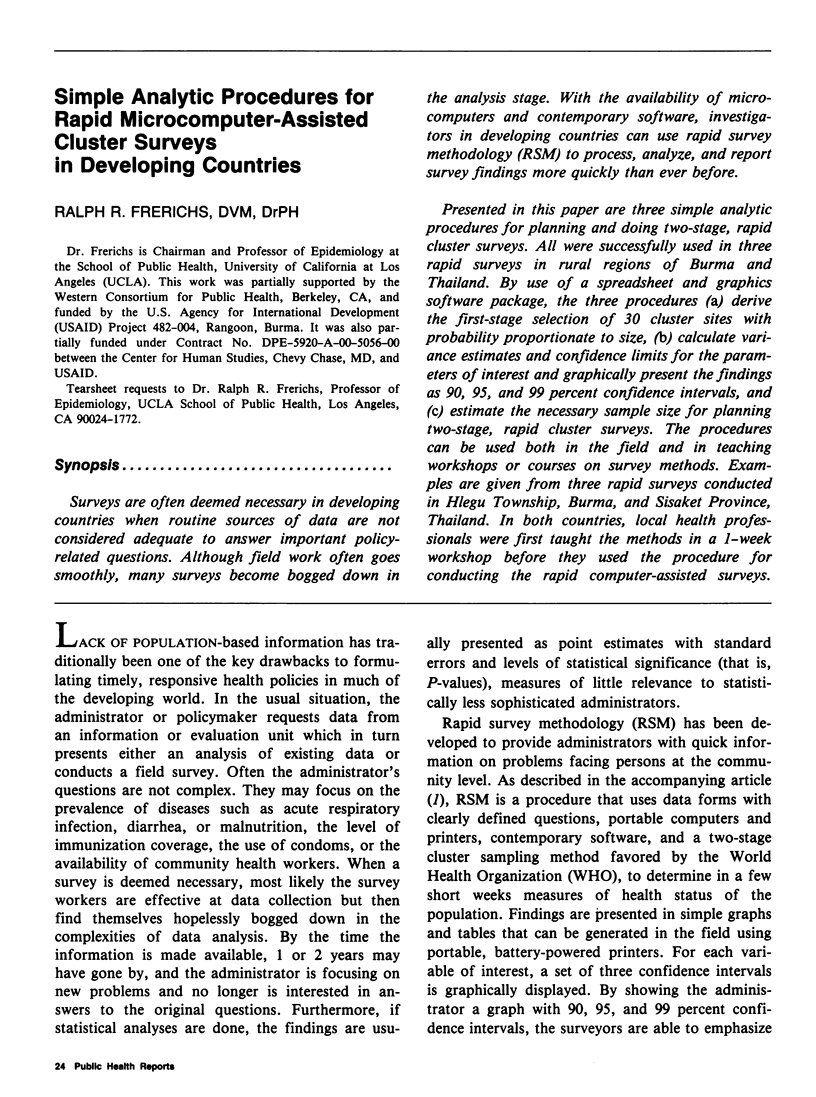
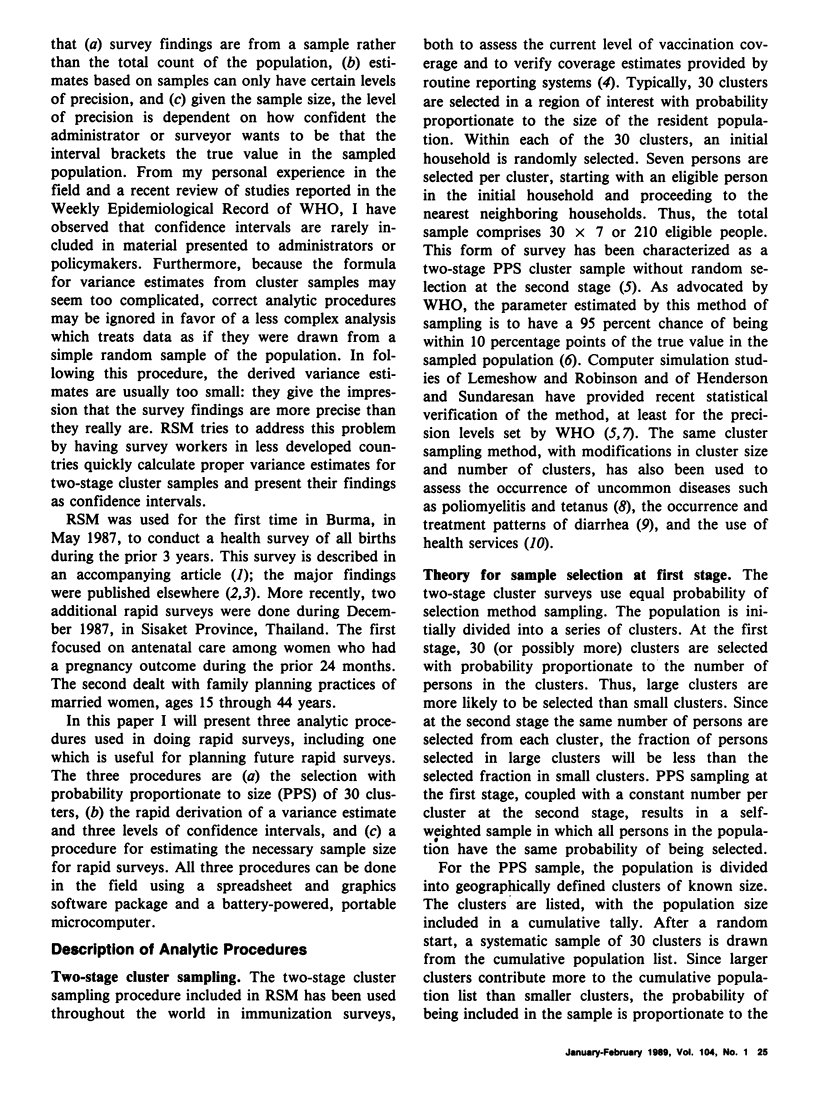
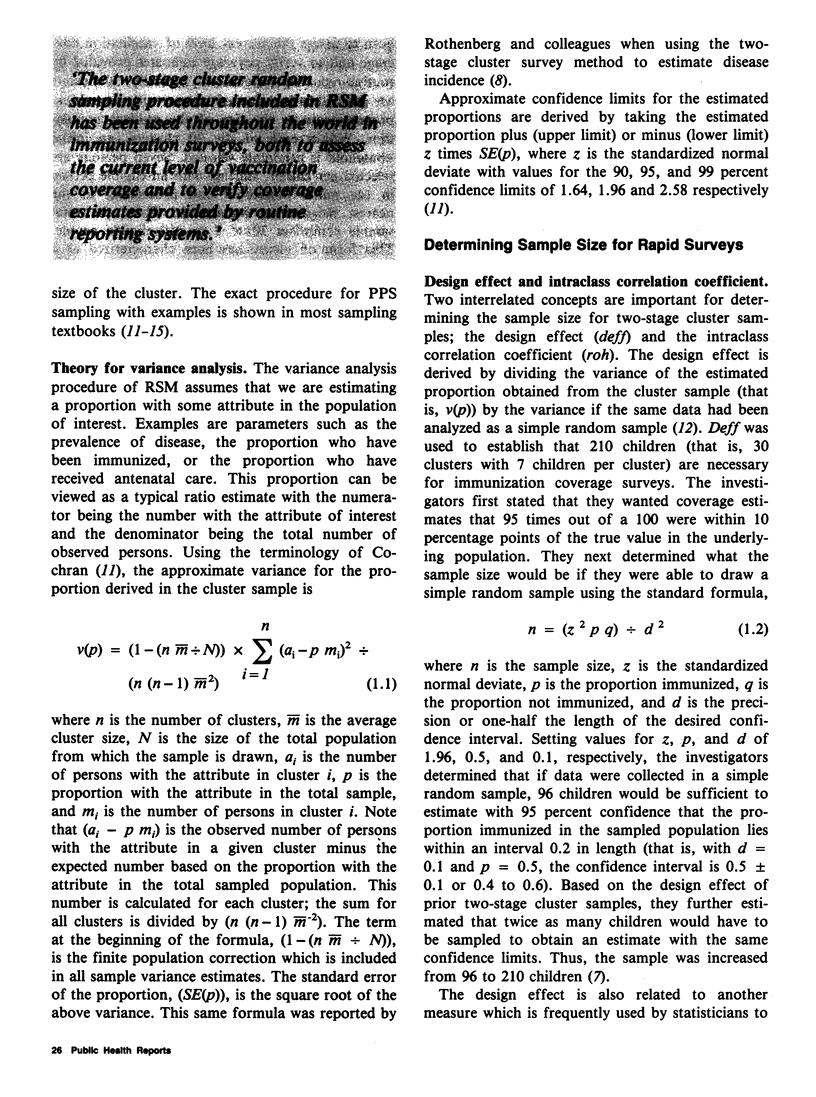
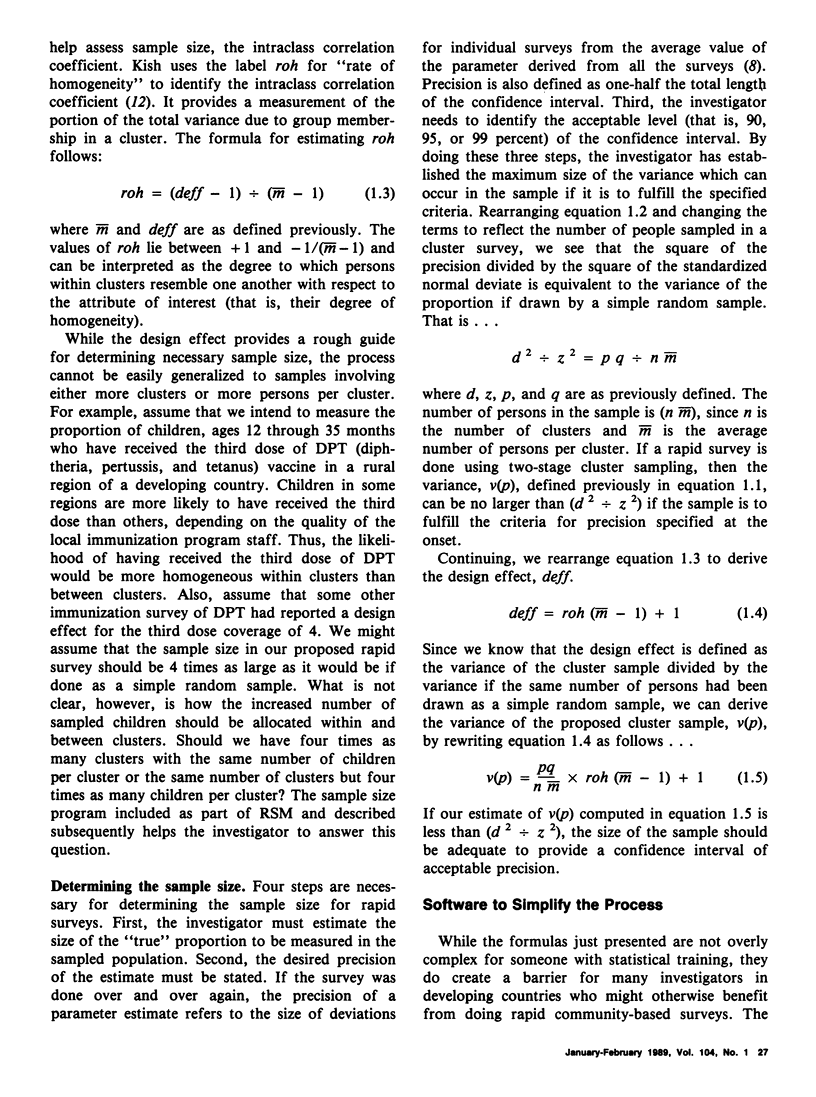
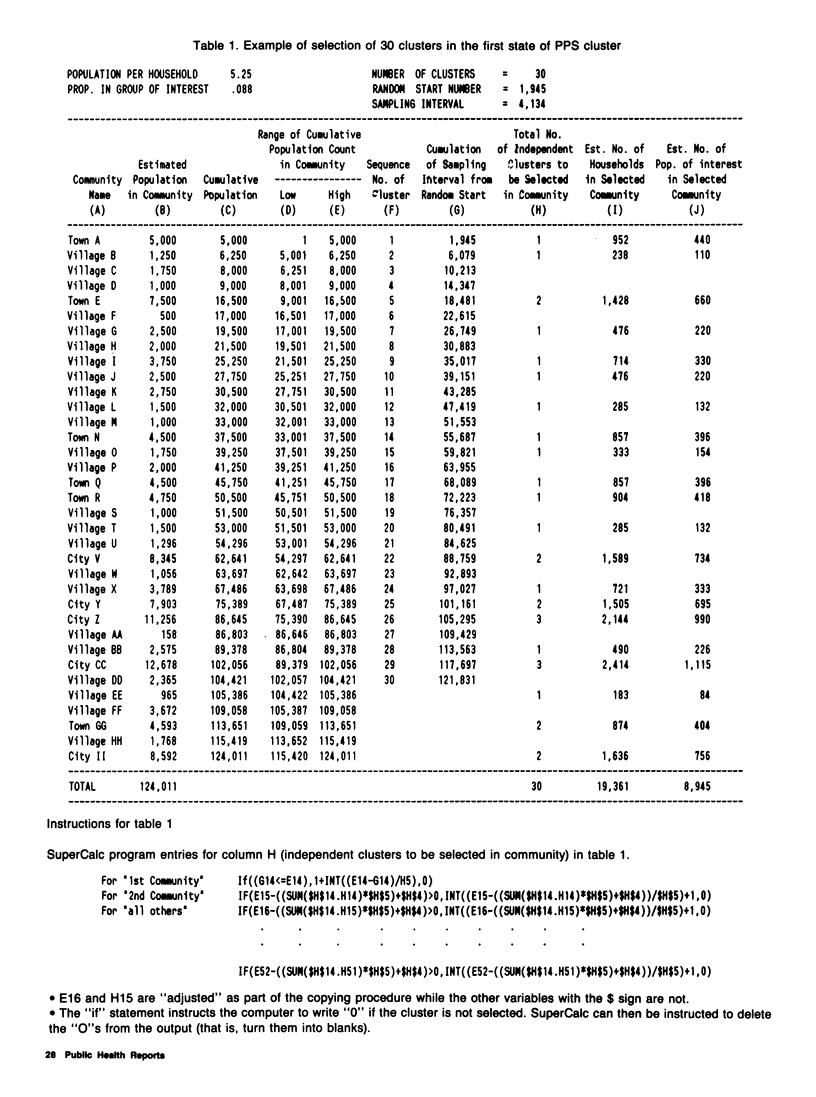
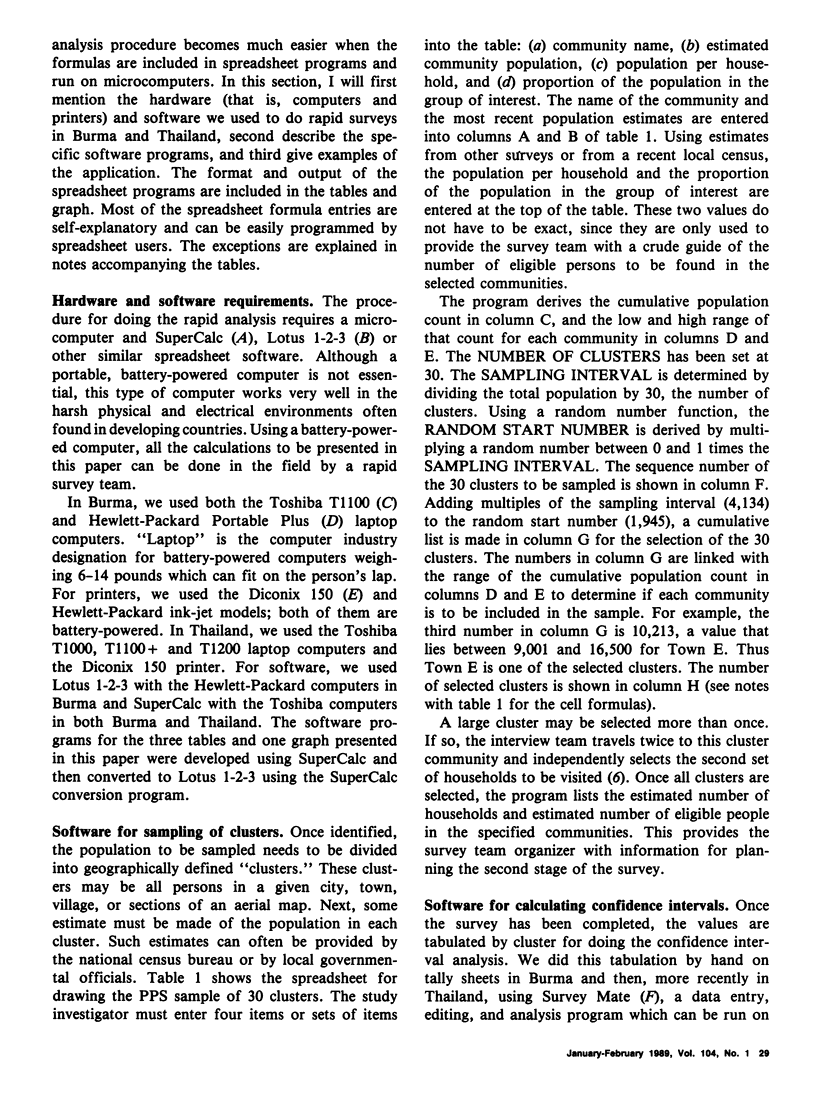
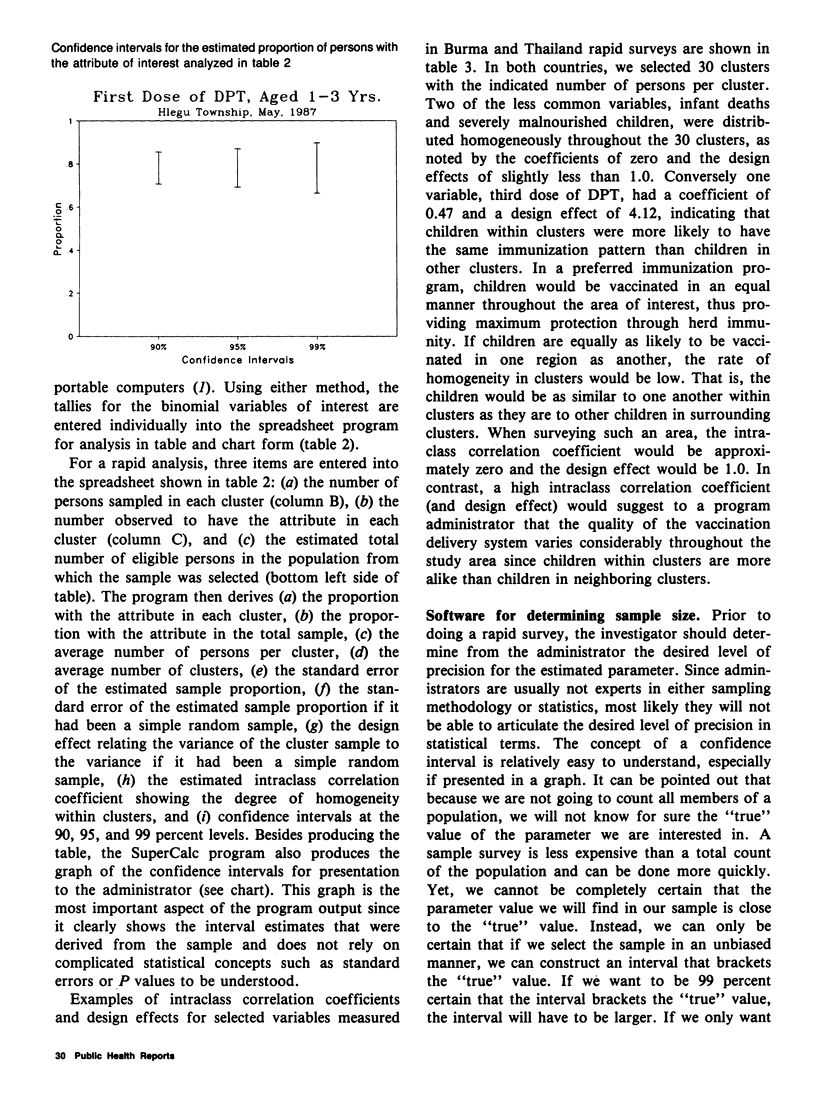
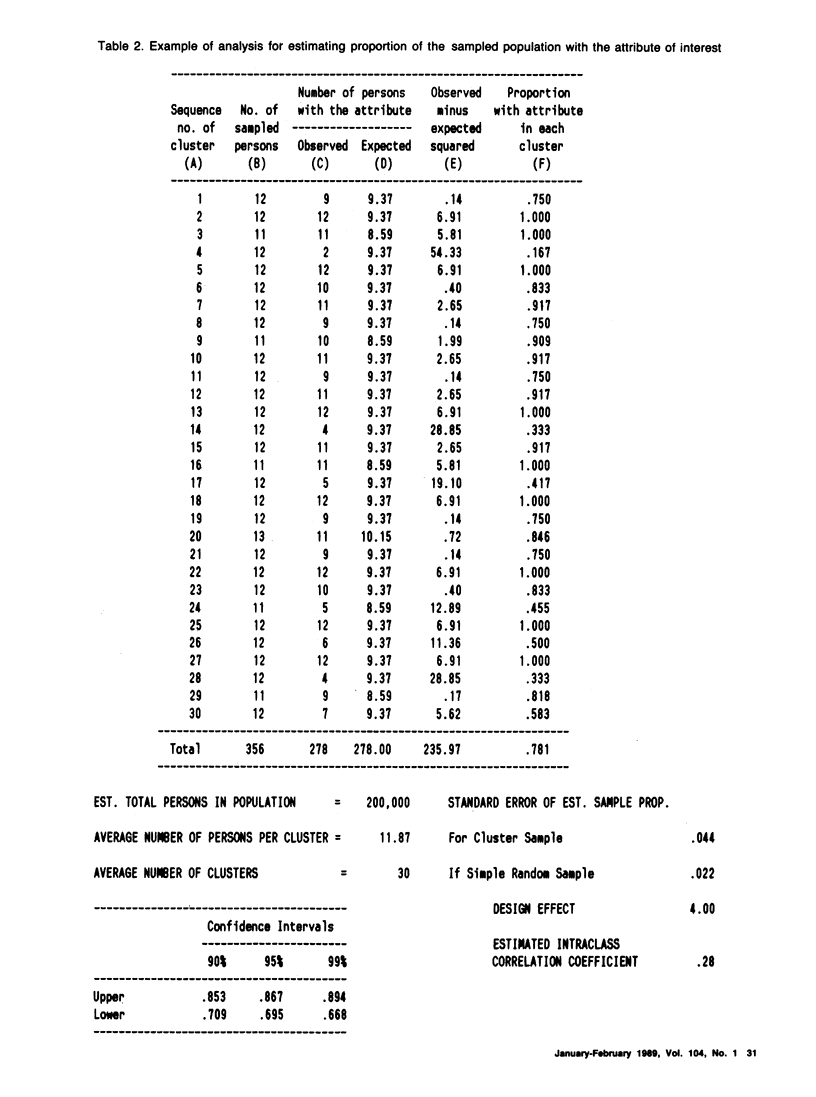
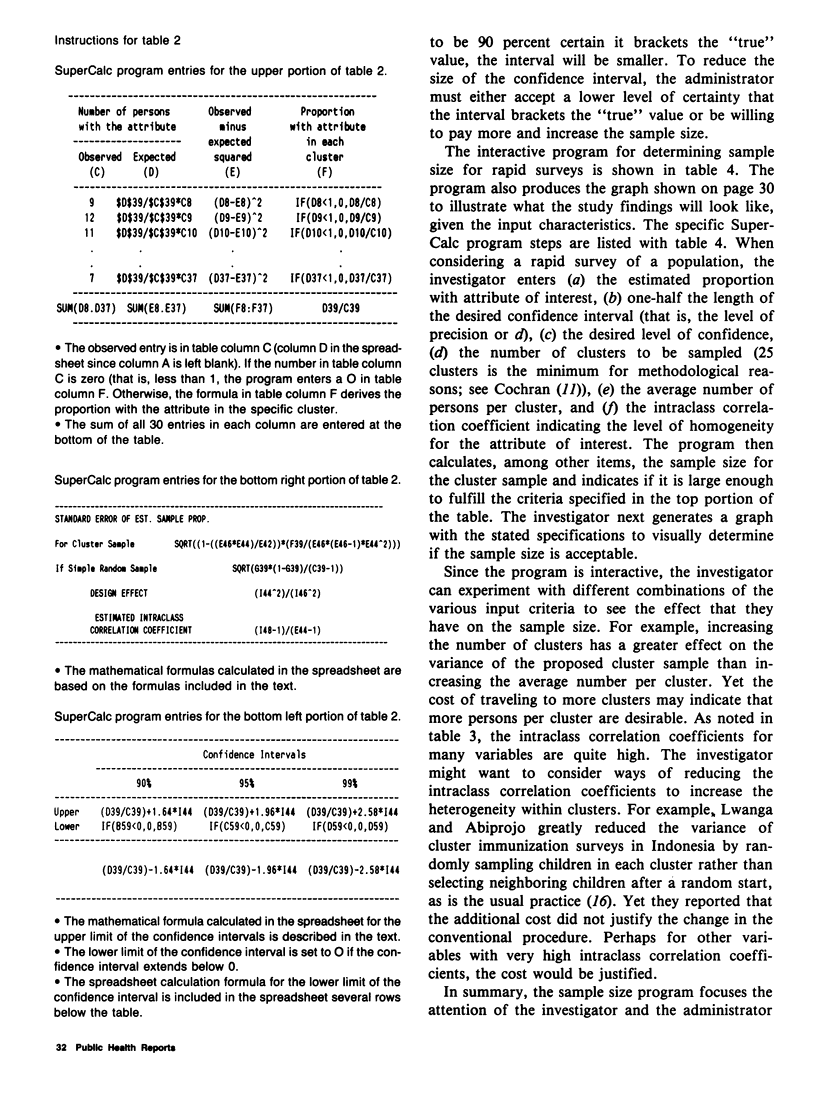
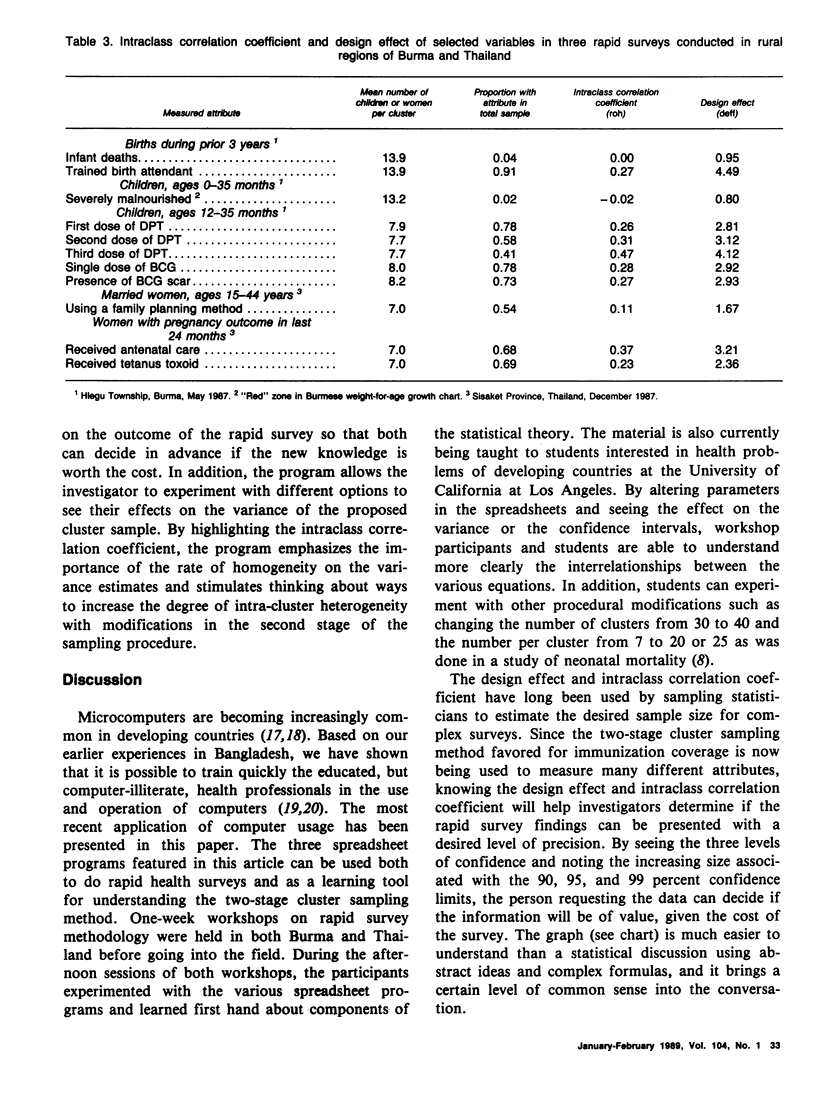
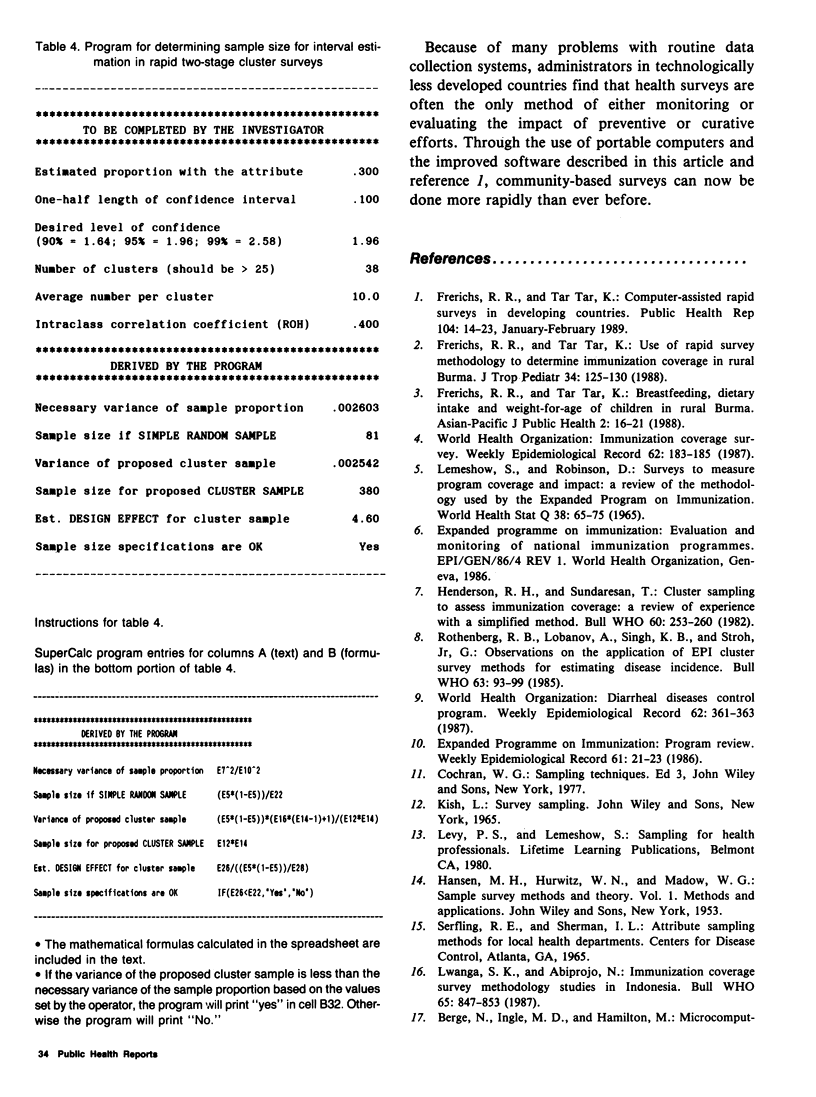
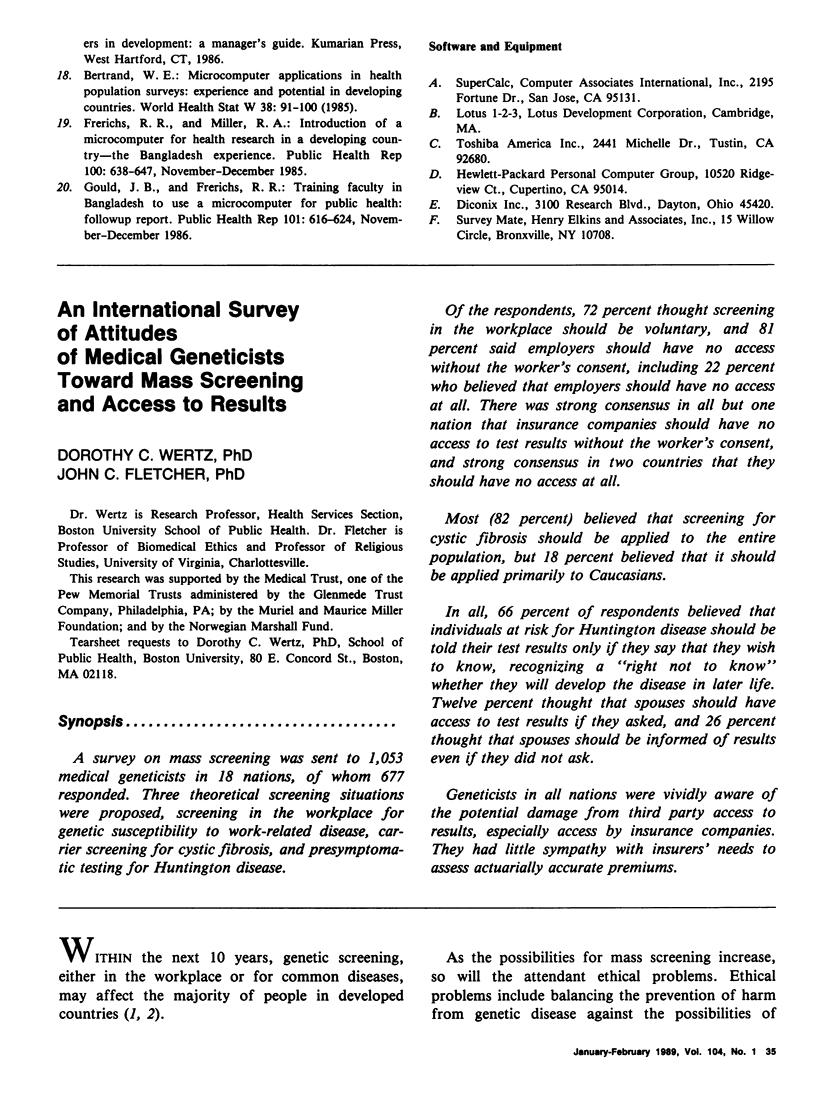
Selected References
These references are in PubMed. This may not be the complete list of references from this article.
- Bertrand W. E. Microcomputer applications in health population surveys: experience and potential in developing countries. World Health Stat Q. 1985;38(1):91–100. [PubMed] [Google Scholar]
- Frerichs R. R., Miller R. A. Introduction of a microcomputer for health research in a developing country--the Bangladesh experience. Public Health Rep. 1985 Nov-Dec;100(6):638–647. [PMC free article] [PubMed] [Google Scholar]
- Frerichs R. R., Tar Tar K. Use of rapid survey methodology to determine immunization coverage in rural Burma. J Trop Pediatr. 1988 Jun;34(3):125–130. doi: 10.1093/tropej/34.3.125. [DOI] [PubMed] [Google Scholar]
- Frerichs R. R., Tar K. T. Breast-feeding, dietary intake and weight-for-age of children in rural Burma. Asia Pac J Public Health. 1988;2(1):16–21. [PubMed] [Google Scholar]
- Frerichs R. R., Tar K. T. Computer-assisted rapid surveys in developing countries. Public Health Rep. 1989 Jan-Feb;104(1):14–23. [PMC free article] [PubMed] [Google Scholar]
- Gould J. B., Frerichs R. R. Training faculty in Bangladesh to use a microcomputer for public health: followup report. Public Health Rep. 1986 Nov-Dec;101(6):616–623. [PMC free article] [PubMed] [Google Scholar]
- Henderson R. H., Sundaresan T. Cluster sampling to assess immunization coverage: a review of experience with a simplified sampling method. Bull World Health Organ. 1982;60(2):253–260. [PMC free article] [PubMed] [Google Scholar]
- Lemeshow S., Robinson D. Surveys to measure programme coverage and impact: a review of the methodology used by the expanded programme on immunization. World Health Stat Q. 1985;38(1):65–75. [PubMed] [Google Scholar]
- Lwanga S. K., Abiprojo N. Immunization coverage surveys: methodological studies in Indonesia. Bull World Health Organ. 1987;65(6):847–853. [PMC free article] [PubMed] [Google Scholar]
- Rothenberg R. B., Lobanov A., Singh K. B., Stroh G., Jr Observations on the application of EPI cluster survey methods for estimating disease incidence. Bull World Health Organ. 1985;63(1):93–99. [PMC free article] [PubMed] [Google Scholar]


